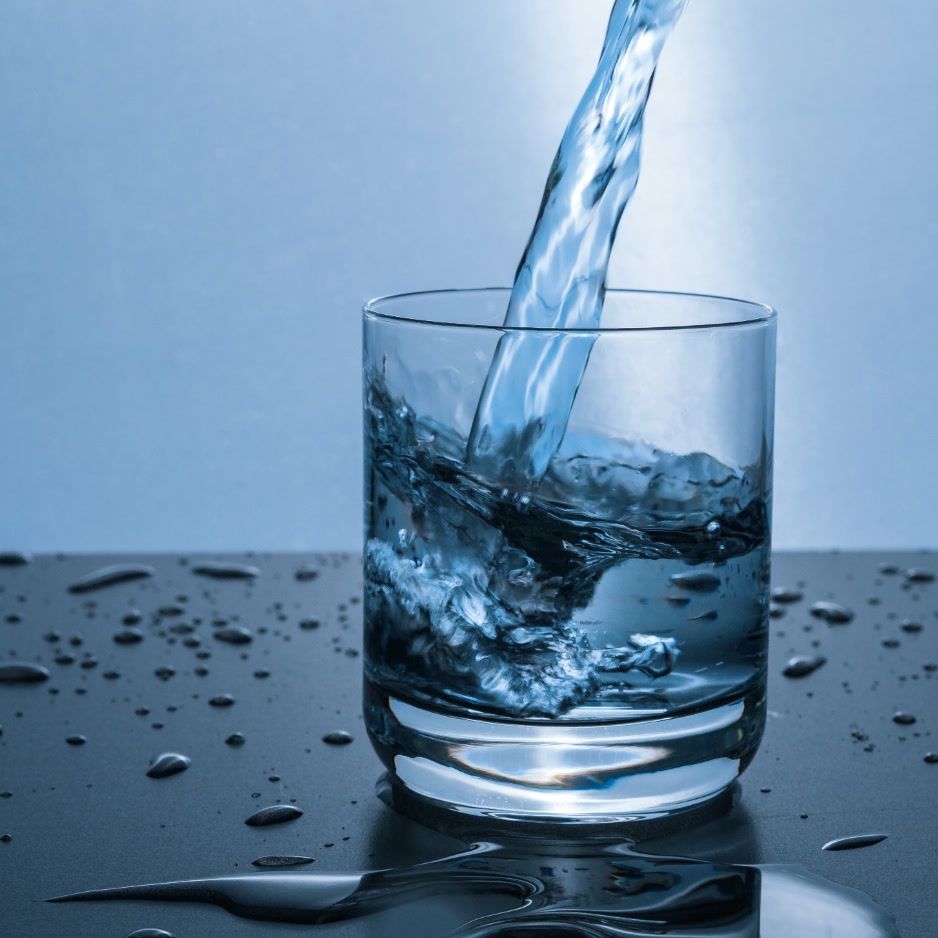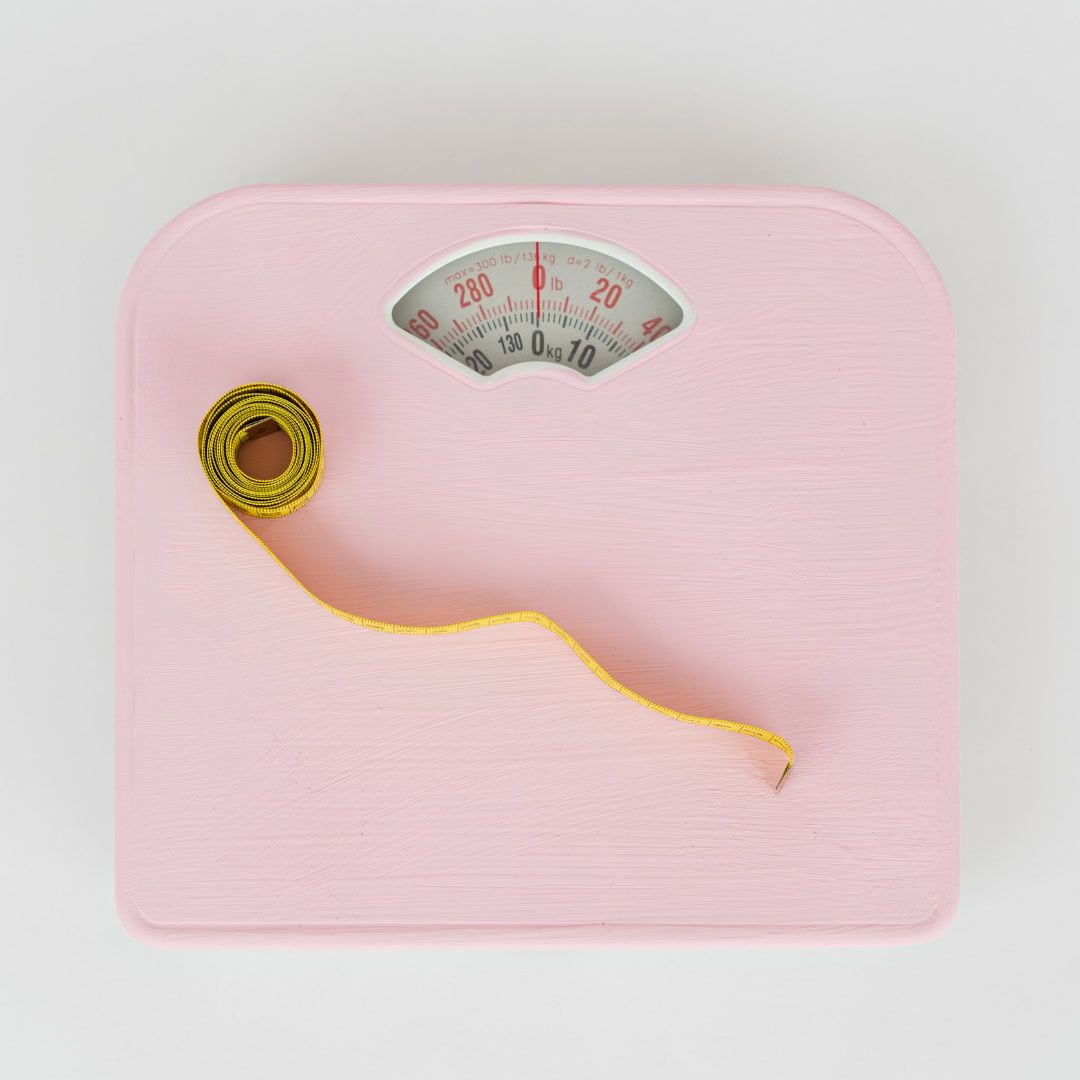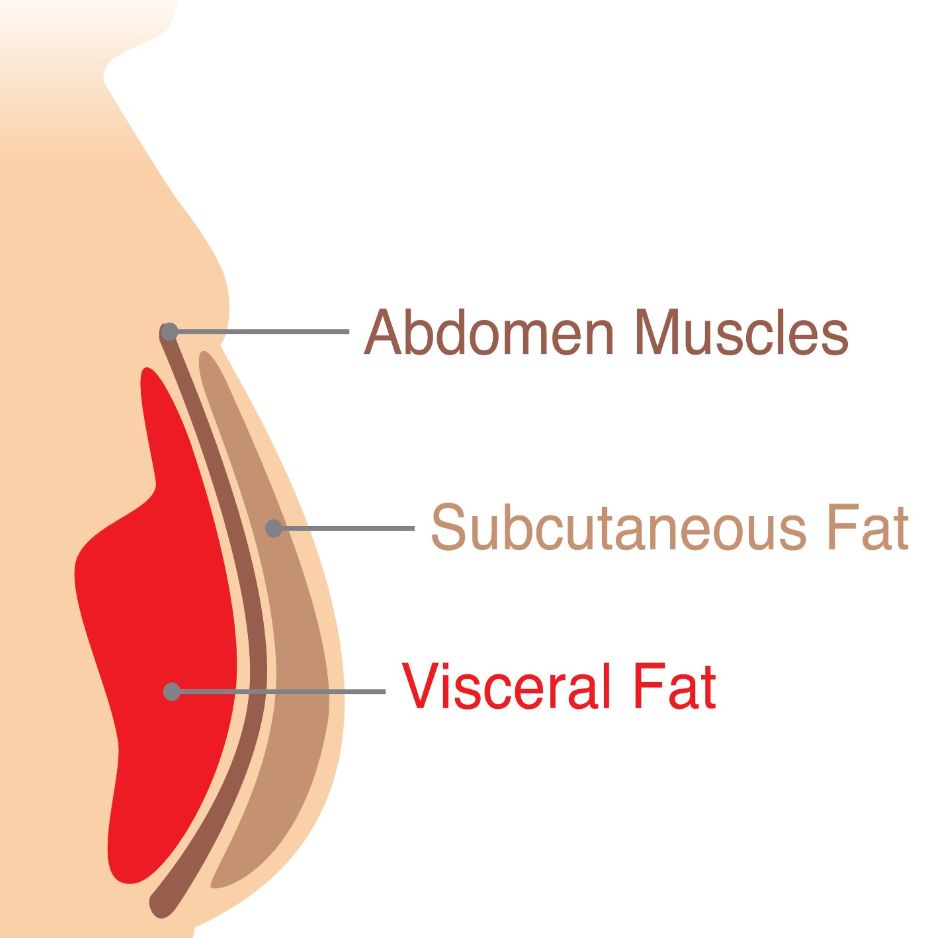Subcutaneous vs Visceral Fat: What's the Difference?

Subcutaneous vs Visceral Fat: What's the Difference?
Alright folks, gather around because we're about to delve into the oozy, squishy world of fat. Yes, today we're going to uncover the mysteries behind subcutaneous and visceral fat. Strap yourselves in, because this is going to be an enlightening journey through the jiggly depths of our bodies.
Get weekly updates.
Understanding Body Fat: An Overview
Before we dive into the specifics of subcutaneous and visceral fat, let's take a moment to appreciate the role fat plays in our bodies. It's not just a storage unit for those extra pizza slices we just couldn't resist. No, my friends, fat is much more than that.
In fact, fat is an essential component of our bodies. It serves as an energy source, helps regulate our body temperature, and even plays a role in hormone regulation. So, let's give a round of applause to fat for all its hard work!
But what exactly does fat do in our bodies? Well, let me tell you. Fat is like the unsung hero of our bodies. It provides us with a source of energy that we can tap into when our bodies are in need. Picture fat as your body's personal pantry, stocked with delicious, calorie-packed goodies just waiting to be used.
Not only that, but fat also helps to insulate and protect our vital organs. It's like a bodyguard for your liver, kidneys, and all those other important bits inside you. So, next time you're cursing those love handles, remember that they're doing a pretty important job keeping your insides safe and sound.
The Role of Fat in the Body
As I mentioned before, fat is like the unsung hero of our bodies. It provides us with energy and insulation for our organs.
But wait, there's more! Fat also plays a role in hormone regulation. It produces and stores hormones that help regulate various bodily functions, such as metabolism and reproduction. So, you can thank fat for helping to keep your hormones in check.
Additionally, fat cells release certain substances called adipokines, which play a role in inflammation and immune response. These adipokines can have both positive and negative effects on our health, depending on the amount and type of fat in our bodies.
Different Types of Body Fat
Now that we understand how fat is our body's BFF, let's talk about the two different types of fat that call our bodies home: subcutaneous fat and visceral fat. These two fats may sound like a crime-fighting duo, but trust me, they're not quite as glamorous as Batman and Robin.
Subcutaneous fat is the fat that lies just beneath our skin. It's the stuff we can pinch and wiggle around, and it's what gives us those oh-so-lovable cuddly bits. But don't be fooled by its cuddliness, subcutaneous fat actually serves an important purpose. It helps to regulate our body temperature by providing insulation, keeping us warm and cozy even on chilly days.
Visceral fat, on the other hand, is a little sneakier. It hides deep inside our bodies, wrapping around our organs like a clingy ex. Unlike subcutaneous fat, which is more superficial, visceral fat is located deep in the abdominal cavity. It may not be as visible, but it can have a greater impact on our health.
Visceral fat is often referred to as "belly fat" and is associated with an increased risk of various health conditions, such as heart disease, type 2 diabetes, and certain types of cancer. This type of fat is metabolically active and releases fatty acids and inflammatory substances that can negatively affect our organs and overall health.
So, while subcutaneous fat may be the one we can easily grab onto, it's important to keep an eye on our visceral fat as well. Maintaining a healthy balance between the two is key to promoting overall health and well-being.
What is Subcutaneous Fat?
Let's take a closer look at subcutaneous fat, shall we? This is the kind of fat that we all know and love (or love to hate). It's the excess fluff that accumulates around our bellies, thighs, and all the nooks and crannies of our bodies.
Location and Function of Subcutaneous Fat
Subcutaneous fat is like that extra layer of insulation you add to your house during winter. It's located just beneath the skin and serves as a natural padding to protect our bodies from the outside world. It keeps us warm and toasty when the temperature drops and gives us a little extra cushioning when we accidentally trip and fall (because, let's face it, we're all a little clumsy).
This type of fat also acts as a storage depot for energy. Remember that pantry I mentioned earlier? Well, subcutaneous fat is like the walk-in closet of that pantry. It's where our bodies stash away all those extra calories we consume when we indulge in that second (or third) slice of cake.
Impact of Subcutaneous Fat on Health
Now let's talk about the impact subcutaneous fat can have on our health. While a little bit of subcutaneous fat is perfectly normal and even necessary for our bodies to function, excess subcutaneous fat can lead to a whole host of health issues.
Carrying around too much subcutaneous fat increases the risk of developing conditions like diabetes, heart disease, and even certain types of cancer. So, while some subcutaneous fat is necessary, monitoring your body fat is important to prevent long-term health risks.
What is Visceral Fat?
Now, let's shine the spotlight on visceral fat, that sneaky troublemaker that hides deep inside our bodies. You won't be able to pinch this fat roll with your fingers, but trust me, it's there, lurking in the shadows.
Location and Function of Visceral Fat
Visceral fat sets up camp in and around our organs, hugging them tightly. It's like that clingy ex who just can't seem to let go, except instead of leaving us emotionally exhausted, it wreaks havoc on our bodies.
This type of fat releases hormones and chemicals that can mess with our bodies' delicate balance. It has been linked to increased insulin resistance, inflammation, and a higher risk of certain diseases like type 2 diabetes and heart disease. In short, visceral fat is like the villain of our story, silently plotting its evil deeds.
Impact of Visceral Fat on Health
Visceral fat is the real troublemaker when it comes to our health. It's not just about how we look in our favorite jeans (although, let's face it, that helps too). Excess visceral fat can lead to all sorts of health issues that we definitely want to avoid.
Having too much visceral fat increases the risk of developing chronic diseases, like heart disease and certain types of cancer. It also messes with our hormone levels, making it even harder for our bodies to regulate blood sugar levels and maintain a healthy weight. So, let's banish this villainous fat and give our bodies a chance to thrive!
Key Differences Between Subcutaneous and Visceral Fat
Now that we know the basic ins and outs of subcutaneous and visceral fat, let's compare the two and see what sets them apart.
Differences in Location
When it comes to location, subcutaneous fat takes the spotlight. It's the fat that hangs out just below our skin, giving us those extra curves and jiggles. Visceral fat, however, prefers to keep a low profile, hiding deep inside our bodies, wrapped around our organs like a clingy ex that just won't let go.
Differences in Function
Functionally speaking, subcutaneous fat acts as padding and insulation for our bodies. It keeps us warm, protects our organs, and stores away excess energy for a rainy day. Visceral fat, on the other hand, is like a villain who messes with your hormones. It releases chemicals that can mess with our body's delicate balance, making it harder to regulate blood sugar levels and maintain a healthy weight.
Differences in Health Impact
Now, let's talk about everyone's favorite topic: the impact of fat on our health. While both subcutaneous and visceral fat can cause health issues when in excess, visceral fat takes the cake when it comes to being a health hazard. It's the one that increases the risk of chronic conditions like heart disease, type 2 diabetes, and certain types of cancer. So, let's keep the villainous visceral fat at bay, folks!
How to Measure Subcutaneous and Visceral Fat
Now that we're experts on subcutaneous and visceral fat, you might be wondering how on earth we can measure these sneaky fats. Well, fear not, my friends, because science has come to the rescue with fancy tools and measurements.
Tools for Measuring Body Fat
If you're looking to get a precise measurement of your subcutaneous and visceral fat, there are a few tools at your disposal. One popular method is using Dual-Energy X-ray Absorptiometry (DEXA) scans. These scans can give you a detailed breakdown of your body fat distribution, as well as your muscle mass and even bone density. It's like a high-tech peek into the inner workings of your body!
Another option is bioelectrical impedance analysis (BIA), which involves passing a small electrical current through your body to measure various tissue types.
Interpreting Your Body Fat Measurements
Once you have your fancy body fat measurements in hand, you might be wondering what the heck they actually mean. Well, fear not, my friends, because there are plenty of experts out there who can help you interpret those numbers and make sense of your body fat distribution.
With this knowledge, you'll be armed and ready to make informed decisions about your health and take the necessary steps to keep your subcutaneous and visceral fat in check. So, go forth and conquer your fat-loss goals, my friends!
And remember, if you want to keep tabs on your body fat, muscle mass, and bone health over time, consider BodySpec's affordable DEXA scans. It's like having your very own personal fat detective, ready to uncover all the secrets hiding beneath your skin. So why wait? Unmask your body's mysteries and give yourself the gift of knowledge!


